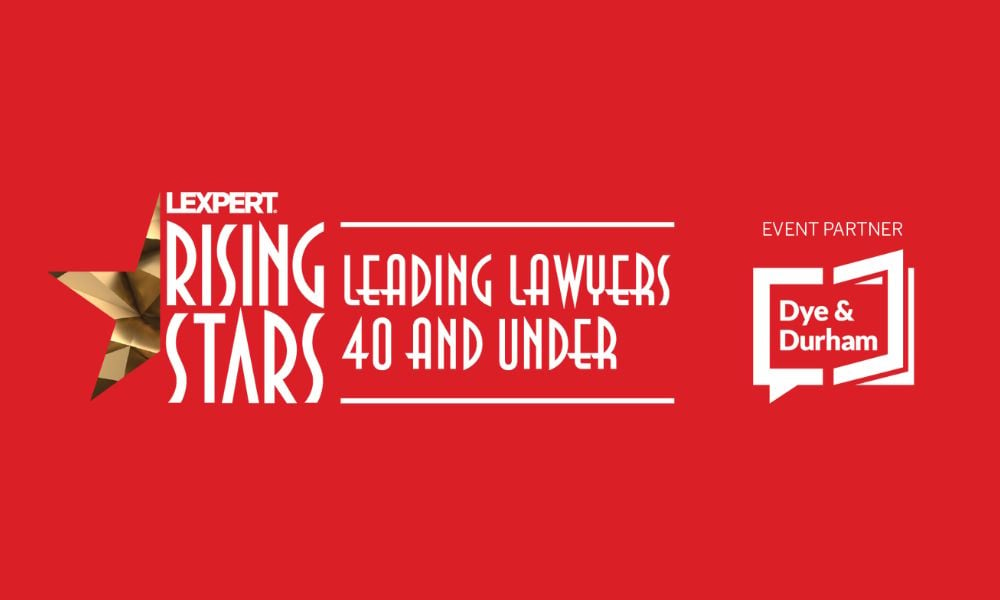 UBC law professor Sharon Sutherland, and some innovative colleagues, are pioneering the use of theatrical techniques to teach law. Last year Sutherland launched the online journal Masks, which publishes essays by academics around the world working at the intersection of law and theatre. Sutherland, 46, first became interested in drama during elementary school when she performed in school plays in Tsawwassen, B.C. But the acting bug didn’t bite her. The law bug did.
UBC law professor Sharon Sutherland, and some innovative colleagues, are pioneering the use of theatrical techniques to teach law. Last year Sutherland launched the online journal Masks, which publishes essays by academics around the world working at the intersection of law and theatre. Sutherland, 46, first became interested in drama during elementary school when she performed in school plays in Tsawwassen, B.C. But the acting bug didn’t bite her. The law bug did.
By Grade 3, she knew she wanted to be a lawyer. That goal stayed with her, even as she explored the world of drama. Before earning her law degree from UBC and an LLM from Osgoode Hall Law School, Sutherland finished a masters in drama and theatre studies at the University of London. She completed two years of course work for a PhD in drama at the University of Toronto but never wrote her thesis — opting instead to focus on a legal career.
Today, in addition to teaching at UBC, Sutherland practises as a professional mediator and mediation consultant. But the theatre is never far from her thoughts. Since 2004, she has been using dramatic techniques, such as improvisation games, extensively in her mediation course. As an experienced mediator, Sutherland knows first-hand the skills required in dispute resolution, including spontaneity and an ability to shift power imbalances. She feels students develop these skills more quickly when they learn them through dramatic games rather than if she lectured from a podium.
Latest News
For example, encouraging students to use their bodies to convey how they felt in a conflict encourages students to acknowledge the emotional aspect of disputes. If you are working in conflict resolution and mediation, “you need to have some ability to deal with the emotional side of it,” says Sutherland. The drama games give students “a freedom to do it that talking about it doesn’t.”
Now in her pose, Sarophim finds herself starting to relax. She’s a bit surprised at how quickly she came up with something. Sutherland tells the students to find classmates who expressed a similar reaction to conflict. The students, still in their poses, walk around the room examining each other. Soon groups of two, three, or four are formed. The groups are told to silently build a mural with their bodies to express how they felt in conflict. Soon the room is full of students silently pointing and moving their bodies as they sculpt group portraits of different emotions.
Many of the theatrical exercises are designed to help students communicate non-verbally. “Law students really over-intellectualize. They want to deal with everything on a verbal level and they will discuss and analyze in that kind of format endlessly,” says Sutherland. But mediation involves knowing how to give and read non-verbal cues, she notes.
In another exercise, Sutherland assigns one student the role of the mediator and two students act as the different parties. Then Sutherland tells the students to move their bodies in ways that draw power or lessen power. As the exercise continues, other students are added into the role playing to change the power dynamics. For example, a student may play the role of a lawyer joining one party. “When you are talking about mediation, a very substantial part of what you’re talking about is differences in power and how do you work with power? How do you work with non-verbals in power?” When students participate in these theatre games, “they often pull completely new insights about power,” says Sutherland.
Other exercises help students become more spontaneous. In one drill, students are put into groups and told they have 12 minutes to come up with a group name, a tag line for the group, a graphic demonstration for the group, and a commercial. “To become an improvisional actor it’s all about training you to . . . just go for it with your first impulse.” This is “closely related to what we do in mediation because often it’s more important that you time your interjection right than that you say the right thing,” she says. “Students spend a lot of time thinking, ‘How do I frame an open-ended question?’ And they’re sitting there so long that it’s too late to say the question and the entire dynamic between parties has shifted and if they had just jumped in and said anything at all, it would have made a difference.”
Many of the exercises are carried out in groups in order that students grow comfortable with each other. Later in the course, students co-mediate with a mentor and a classmate. Exercises that build trust among students are key because as co-mediators “they rely on each other to jump in and to support each other,” says Sutherland.
Sarophim, who took the course last winter, says the trust-building exercises worked. When it comes to co-mediating, “your partner is someone from your class that you’re already comfortable with because you’ve done all of these games together. . . .” In law school, “every other class is so competitive because everything is on a curve.” The mediation course is “all about collaboration.”
At different points in the course, students may be uncomfortable with the dramatic techniques. But Sutherland explains there are benefits to this discomfort. For one thing, experiencing discomfort can help students understand what their clients may feel. In mediation, “everything they’re doing with the clients is going to be unfamiliar to the clients.” Learning how to navigate through discomfort “will increase their ability to work with the clients.”
Gradually, Sarophim explains, students become more comfortable with the dramatic exercises. “The course really boosts your confidence,” says the third-year law student who one day hopes to have a practice split between litigation and mediation. Sutherland plans to expand her use of dramatic exercises beyond the mediation classroom. This fall, she’ll teach a new course on law and theatre. Part of the course will involve exploring how dramatic techniques can be used when teaching other areas of law. For instance, in torts “we spend a lot of time reciting . . . the facts of the case. There are a lot of different games around storytelling and narrative that end with ‘the moral of the story is,’” says Sutherland. “I’d like to try some of those kinds of games in a torts context.”
Douglas Harris, associate dean of graduate studies and research at UBC’s Faculty of Law, says Sutherland encourages law students to explore “the connection between a performance on a stage and a performance in a courtroom, a client interview, a discovery, or in a mediation. . . . In each case the lawyer or the actor is performing a particular role.”






